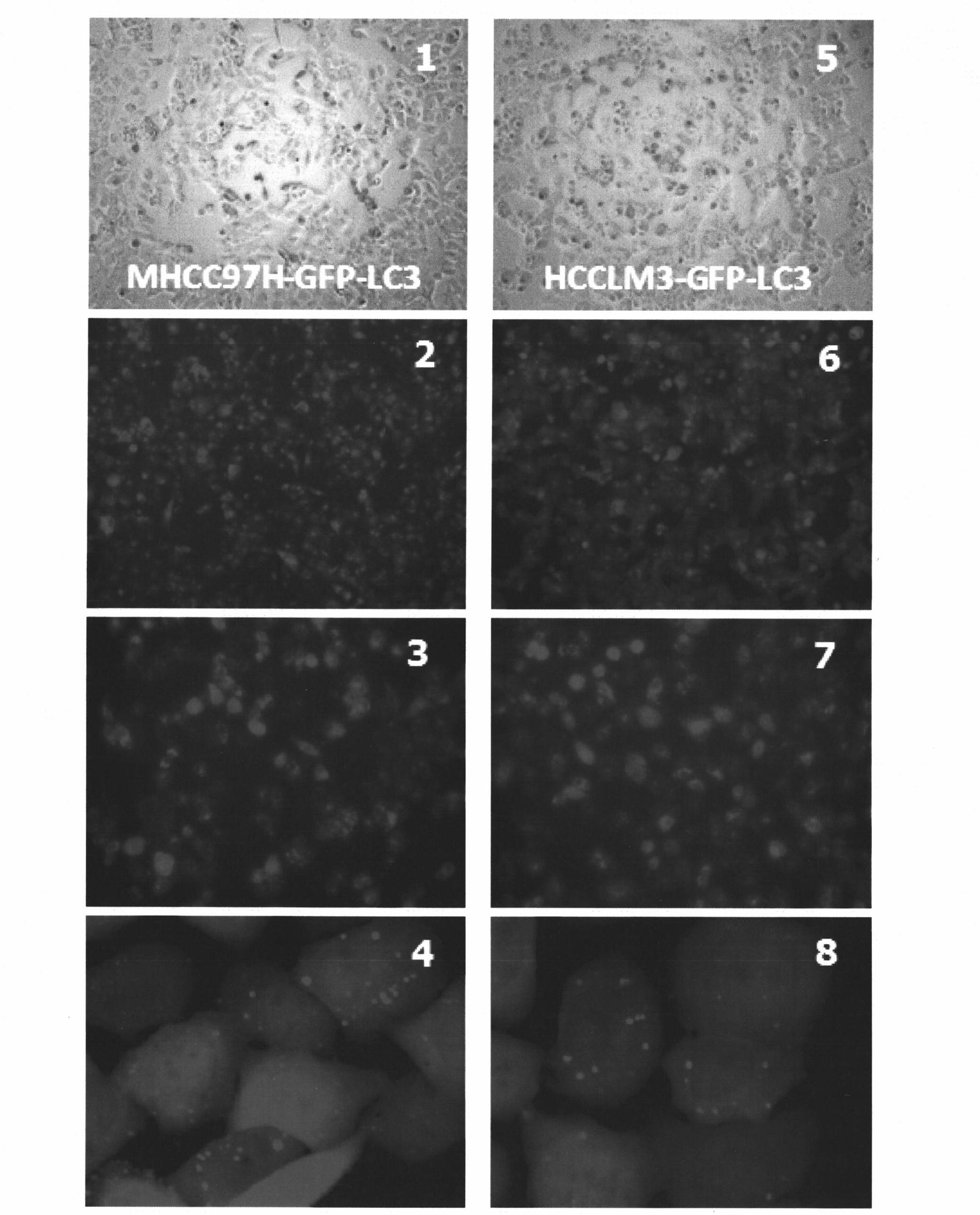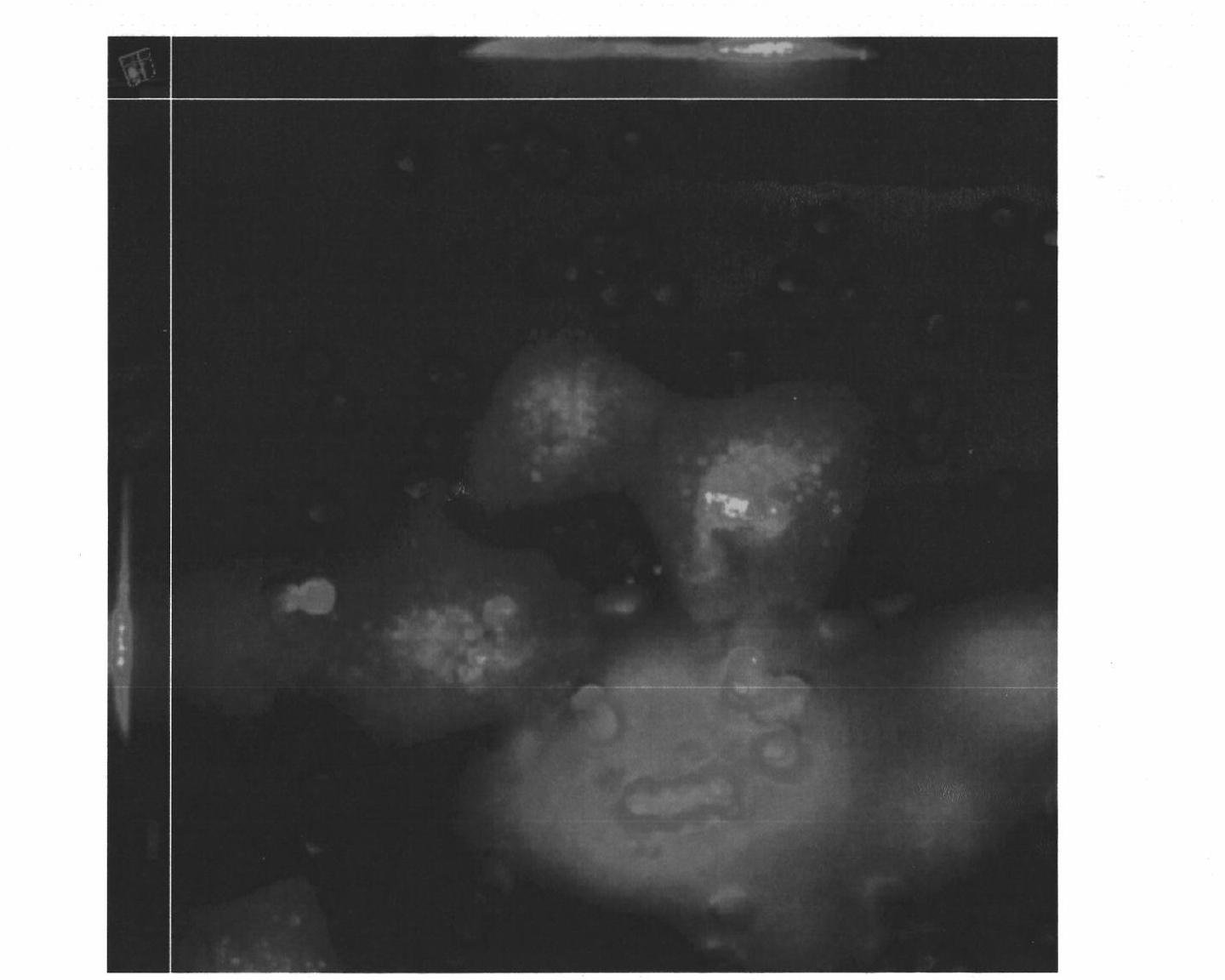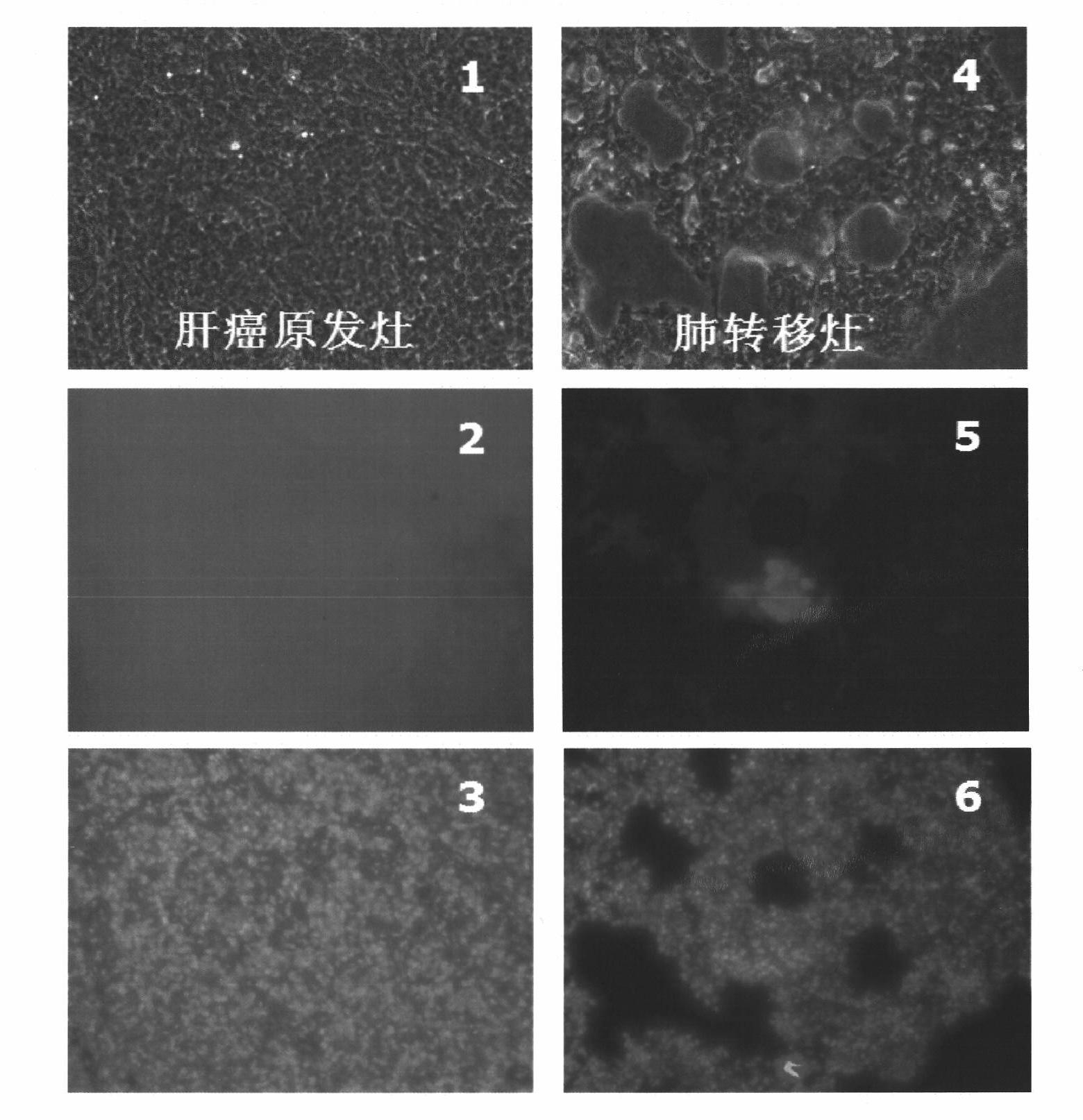High metastatic potential hepatoma cell line capable of steady autophagy indication, and establishment method and application method thereof
A liver cancer cell, high-metastatic technology, applied in the field of biomedicine, can solve the problems of inability to complete autophagy changes, cytotoxicity of transfection reagents, low transfection efficiency, etc. Indicates the effect of high efficiency and stability, reducing the amount of manual labor
- Summary
- Abstract
- Description
- Claims
- Application Information
AI Technical Summary
Problems solved by technology
Method used
Image
Examples
Embodiment 1
[0020] Example 1: This example is used to illustrate the establishment process, functional identification and application method of a stable autophagy-indicating liver cancer cell line with high metastatic potential
[0021] (1) Establishment of liver cancer cell lines with high metastatic potential that stably indicate autophagy: ① Construction of EGFP-LC3 lentiviral expression vector: LC3 gene sequence information was obtained from NCBI, and human LC3 gene was artificially synthesized; EcoR V digested pUC57 plasmid and synthesized LC3 gene , insert the LC3 gene fragment into the pUC57 vector to construct pUC57-LC3; transform competent cells, screen clones, extract plasmid electrophoresis and identify by Kpnl and HindIII double enzyme digestion, and sequence to confirm the inserted product; use Nhe I and Age I to pUC57-LC3 Carry out double enzyme digestion, perform electrophoresis on the digested product, and then gel to recover the 384bp LC3 gene fragment; use Nhe I and Age I...
Embodiment 2-3
[0026] Embodiment 2-3 is in order to further illustrate the concrete application of the present invention
Embodiment 2
[0027] Example 2 Application of the present invention to set up an in vitro invasion model to observe the changes of autophagy in the process of invasion and transfer
[0028] Using Matrigel and Transwell chambers to simulate invasion and metastasis in vitro is the most commonly used research method for studying cancer cell metastasis in vitro. Using the cell line of the present invention, by using Matrigel to set up in vitro invasion, combined with continuous observation of live cell workstation and laser confocal microscope, the changes of autophagy in the invasion process of cancer cells can be observed to a certain extent:
[0029] (1) MHCC97H-GFP-LC3 or HCCLM3-GFP-LC3 cells were cultured to the logarithmic growth phase, and those in good condition were used for experiments;
[0030] (2) Use Matrigel and Transwell chamber to establish in vitro invasion model: ①Matrigel coated Transwell chamber basement membrane: dissolve Matrigel gel (4C overnight), dilute Matrigel gel to ...
PUM
 Login to View More
Login to View More Abstract
Description
Claims
Application Information
 Login to View More
Login to View More - R&D
- Intellectual Property
- Life Sciences
- Materials
- Tech Scout
- Unparalleled Data Quality
- Higher Quality Content
- 60% Fewer Hallucinations
Browse by: Latest US Patents, China's latest patents, Technical Efficacy Thesaurus, Application Domain, Technology Topic, Popular Technical Reports.
© 2025 PatSnap. All rights reserved.Legal|Privacy policy|Modern Slavery Act Transparency Statement|Sitemap|About US| Contact US: help@patsnap.com



